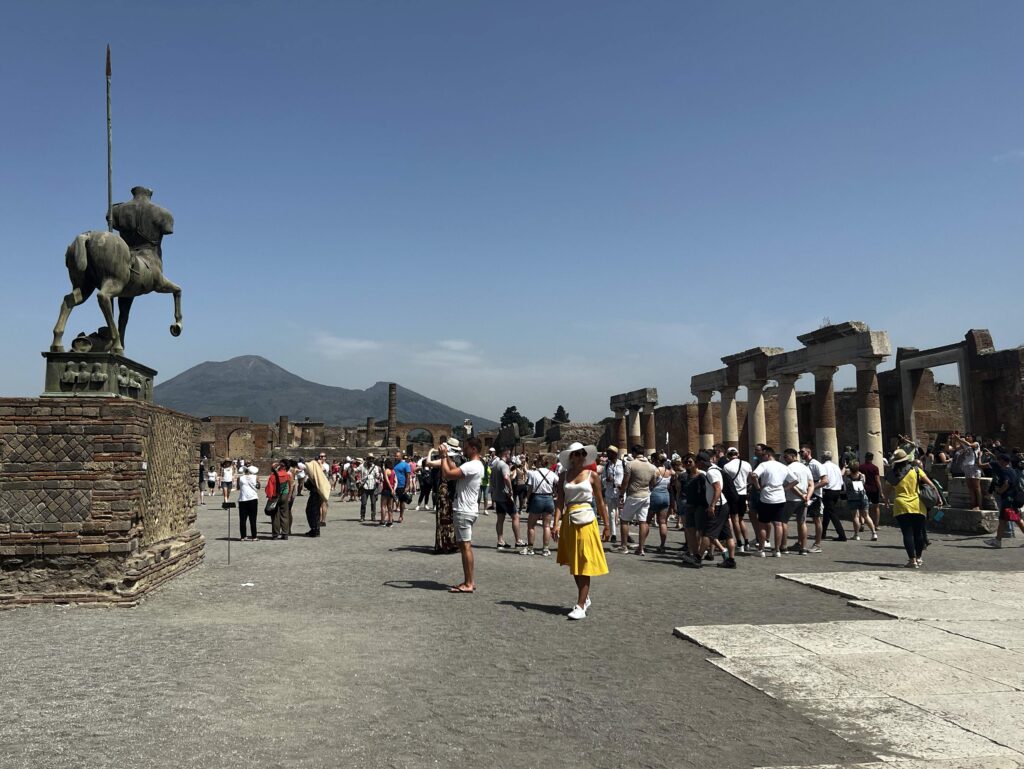Machu Picchu is probably on every traveler’s bucket list, and with good reason. Built by the Incas around 1450, abandoned about 100 years later, and brought to the world’s attention in 1911 by American explorer Hiram Bingham, Machu Picchu is quite simply an architectural masterpiece. Although there are many traces of the Incas remaining in Peru, none offer such breathtakingly irrefutable proof of their brilliancy. For that and many reasons, I found Machu Picchu remarkably better than imagined.

In fact, many of my impressions turned out to be false, gleaned mostly from photographs and from articles in glossy magazines. In pictures, the Inca ruins look virtually inaccessible, so high up as to be halfway to heaven. The Inca Trail, I thought, must be grueling, sending tourists straight up that mountain for four straight days. But because of it’s popularity, I also expected Machu Picchu to be overrun with tourists, detracting from its mysticism and beauty.
It turns out, Machu Picchu is very accessible. The Inca Trail is mostly overland, though not without challenging mountain passes. Furthermore, the Inca Trail–the popular route that severely limits the number of trekkers allowed to sign up on guided tours–is just one way to hike to Machu Picchu. The tour my sons, my sister’s family and I signed up for after we arrived in Cusco was a four-day adventure that included a ride down a mountain on bikes followed by three days of hiking and included just us and three women from Germany. Our tour ended in Aguas Caliente, a nondescript and charmless tourist town at the base of Machu Picchu, but you can also reach Aguas Caliente by train. From there, we awoke before sunrise for the 90-minute climb to the top, but there are also buses. And although I expected swarming crowds, Machu Picchu is so expansive it simply swallows them up.


In other words, Machu Picchu is both overwhelming and mystical, truly one of those once-in-a-lifetime experiences. It would be hard not feel viscerally moved and impressed; the architectural genius of the Incas is impossible to overstate. They built walls and buildings of stone blocks crafted to fit so precisely without mortar that they’re able to withstand earthquakes. Their terraces, cut into hillsides to maximize irrigation and layered with stone, sand and other materials to prevent landslides and erosion, are testimony to their farming prowess.
I kept trying to imagine the city as it was back then, crawling with Incas instead of tourists from around the world, but my imagination was too dim. If only I could time travel. And though I and my family spent eight hours at Machu Picchu, much longer than I’d imagine, it now seems like a dream in the clouds. Albeit, a very powerful dream.


For more ideas of what to see in Peru, see my other posts, Pisac Market More than I Bargained for and Memories of Isla Amantani.
Note that because Machu Picchu’s popularity grows every year, authorities announced that beginning July 1, visitors will be restricted to visiting either in the morning from 6am to noon or in the afternoon from noon to 5:30pm. I suggest the afternoon, because it seems everyone wants to see the sun rise and crowds tend to thin out as the day progresses. In my opinion, the sunrise wasn’t that great anyway. That’s not why you’ve come.
Post Script: Rules for entering Machu Picchu seem to change every year, especially in light of closures during COVID and protests in Peru in 2023. To find updated information on tickets and availability, I suggest checking several tour agencies. In any case, booking way in advance seem to be the way to go.





